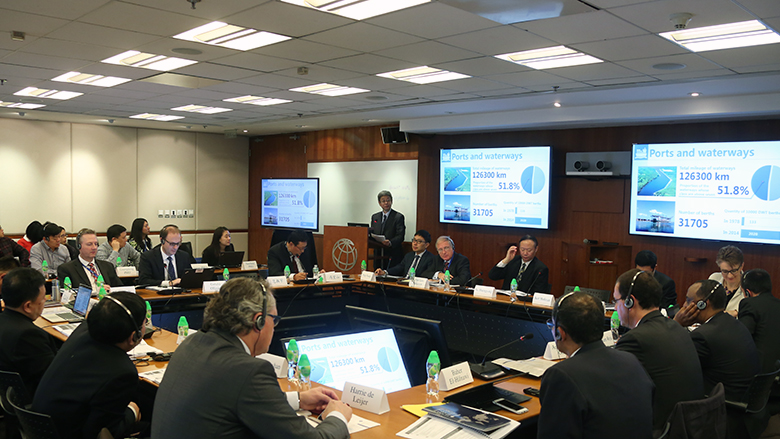Beijing, China – China’s ambitious plans for an advanced transport network and logistic system designed to facilitate continued economic development are set to accelerate.
In 2013, Chinese President Xi Jinping proposed the Silk Road Economic Belt and the 21st-century Maritime Silk Road – collectively referred to as One Belt, One Road – to strengthen economic links between China and international trading partners.
“The vision of trading corridors like the “One Belt One Road” scheme requires well-orchestrated transport networks – as we’ve seen in projects the World Bank has supported in South Asia and Africa,” said Baher El-Hifnawi, the World Bank’s global lead for transport corridors and regional integration, at the China Transport Day Conference.
In a one-day conference, senior officials from the World Bank, China’s central and provincial governments, and experts from research institutes, shared their views and analysis on transport and logistics issues affecting China, including opportunities for partnership.
Potential areas of collaboration include the development of new international trade routes in the One Belt One Road scheme; logistics in the Yangtze River Economic Belt; and urban transport in city clusters such as the Beijing-Tianjin-Hebei route in Jing-Jin-Ji region.
“In the past three decades, the World Bank has approved more than 100 transportation projects in China, with a total investment of $18 billion,” said Jose Luis Irigoyen, Director of the Transport and ICT Global Practice of the World Bank.
Feng Baoshan, an official with the Chinese National Development and Reform Commission, echoed Mr. Irigoyen, saying the co-operation between China and the World Bank should reach a “new level,” with the focus on meeting the development goals China will set in the 13th Five-Year Plan period (2016 – 2020).

